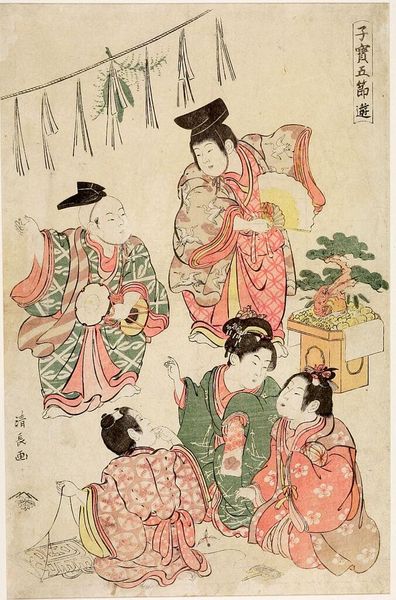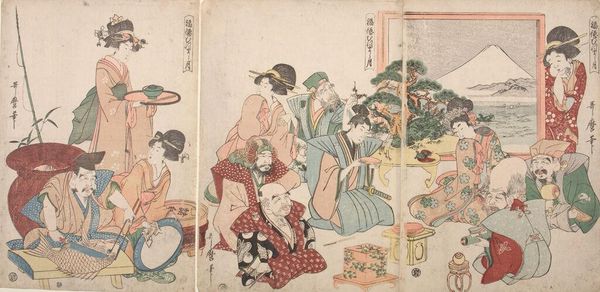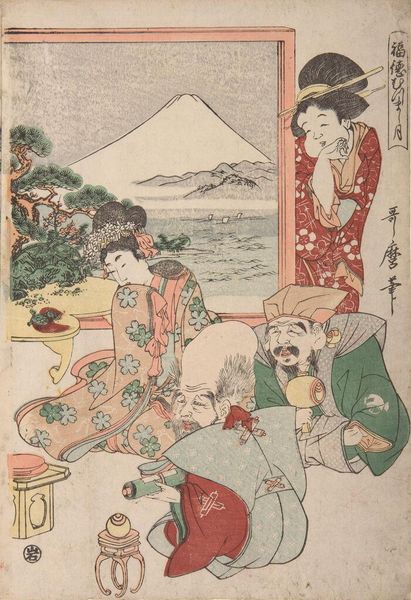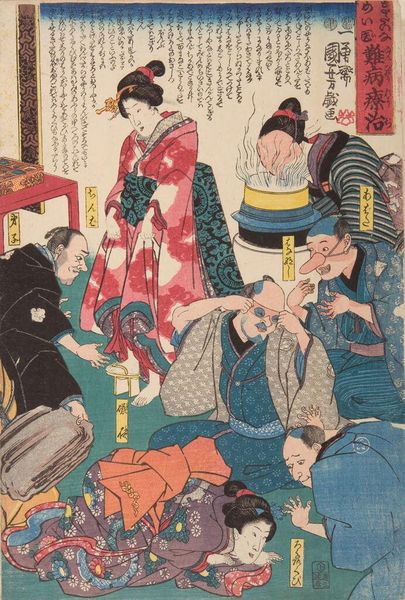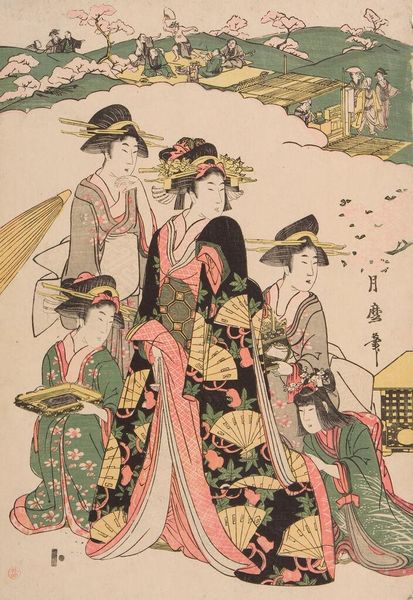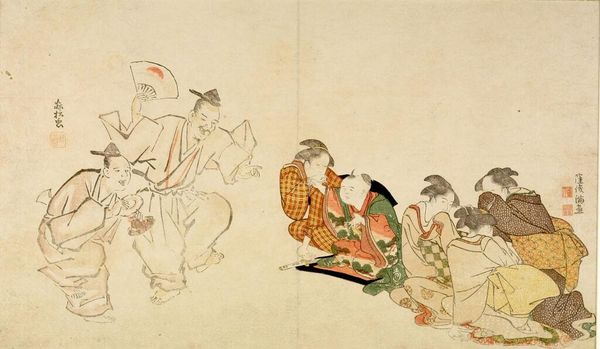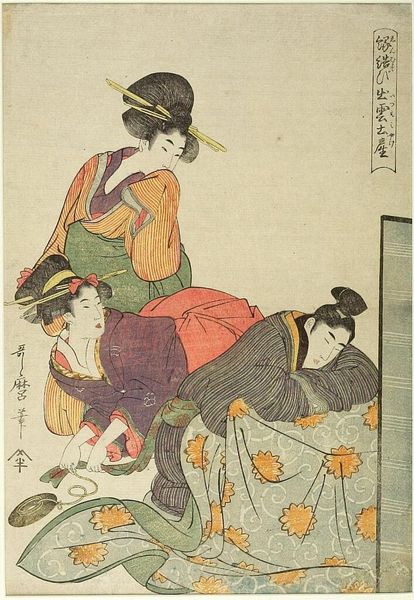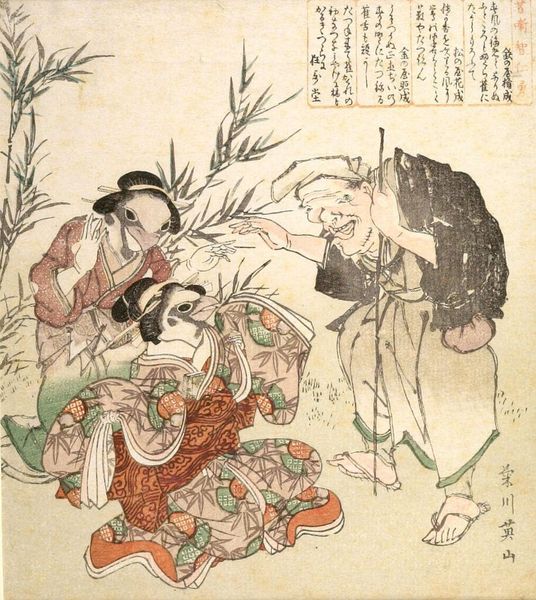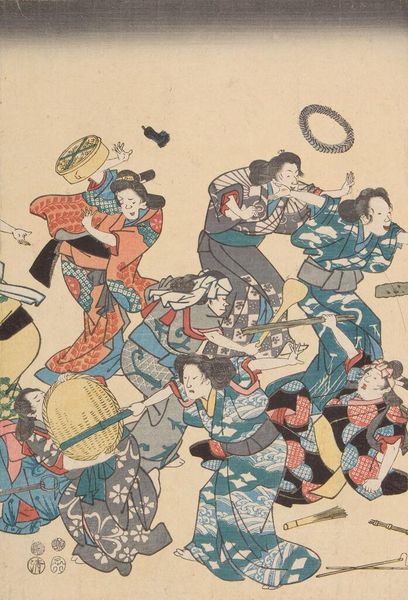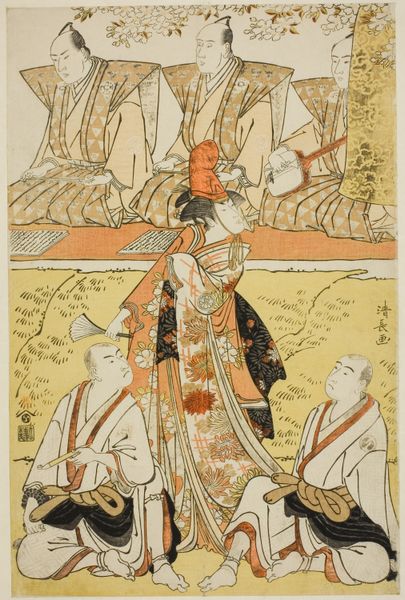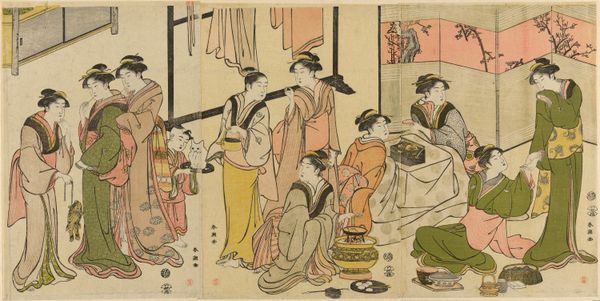
Seven Gods of Good Fortune and Otafuku Celebrating New Year's from the series Prosperous and Harmonious Month (Fukutoku mutsumashi tsuki) Woodblock print (nishiki-e) center sheet of triptych; ink and color on paper
Dimensions: Asian and Mediterranean Art
Copyright: CC0 1.0
Editor: This is Kitagawa Utamaro's "Seven Gods of Good Fortune and Otafuku Celebrating New Year's," from the series Prosperous and Harmonious Month. It feels like a glimpse into a private celebration. What significance did these gatherings hold in 18th-century Japan? Curator: These gatherings weren't just social; they were performative acts reinforcing societal harmony. Utamaro, known for depicting the pleasure quarters, uses these deities to legitimize such communal joy. Consider the idealized figures, rendered through the lens of Ukiyo-e aesthetics, shaping public perception and desire. Editor: So, by associating these deities with New Year's celebrations, he's giving cultural weight to the pleasure quarters? Curator: Precisely! And what does it say about the museum's role in preserving and presenting such culturally charged imagery today? It highlights the power of art to shape, reflect, and even critique societal values, then and now. Editor: I never thought about it that way, it's interesting to consider the museum as an active participant in this cultural dialogue.
Comments
No comments
Be the first to comment and join the conversation on the ultimate creative platform.
